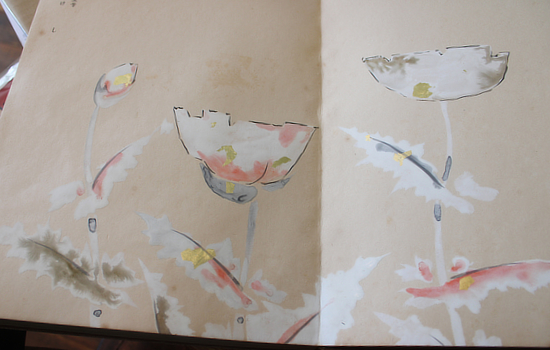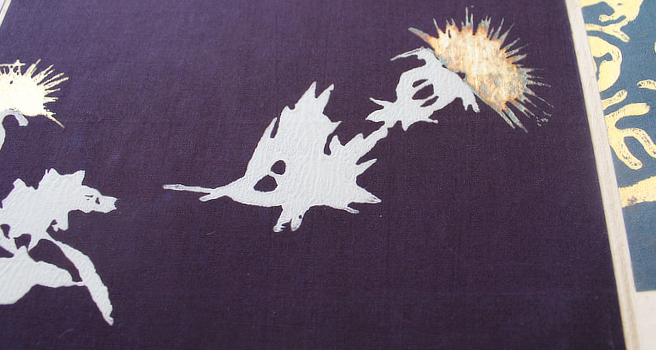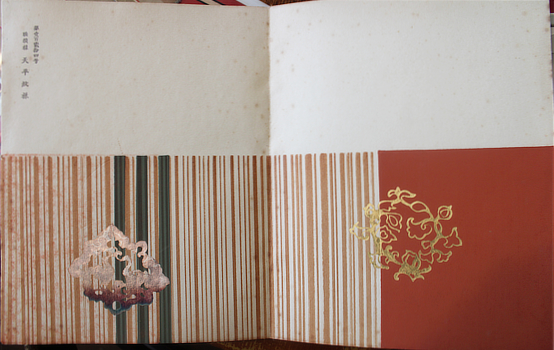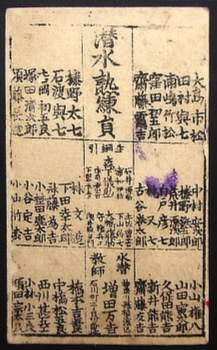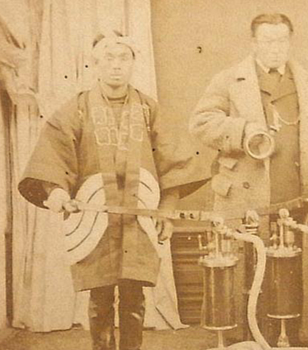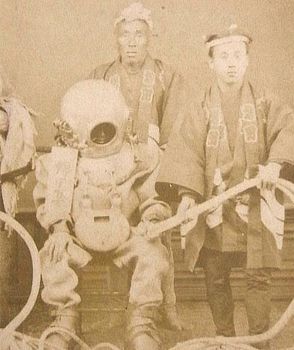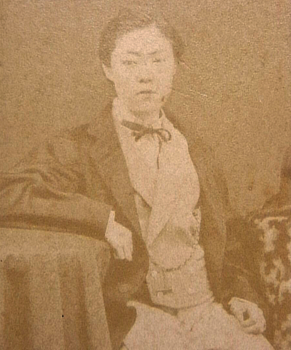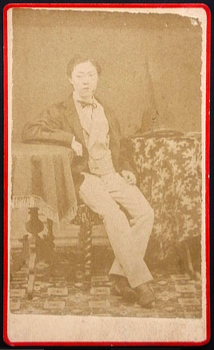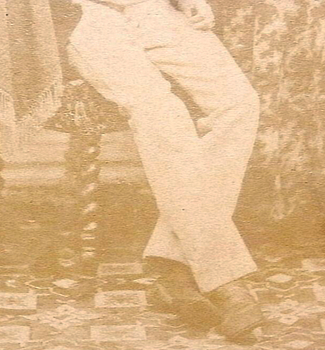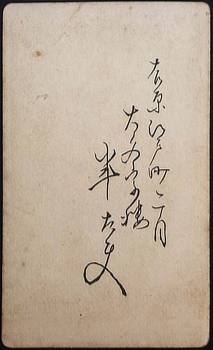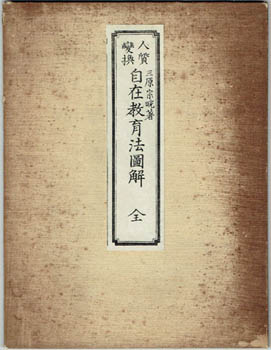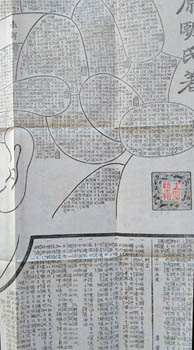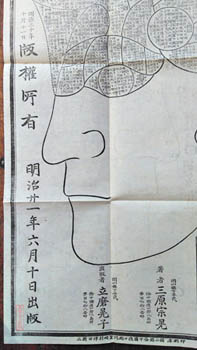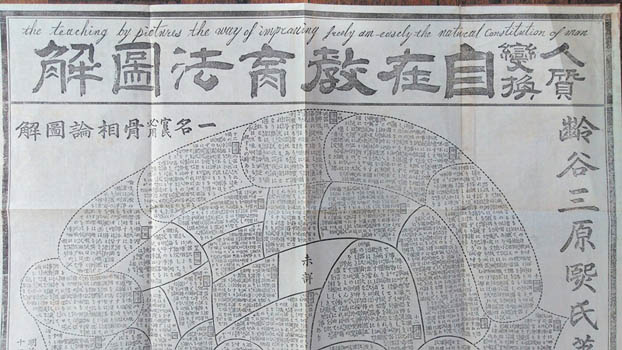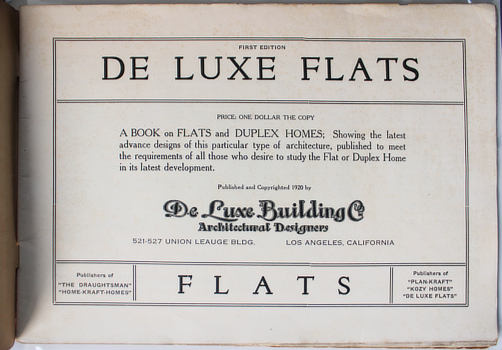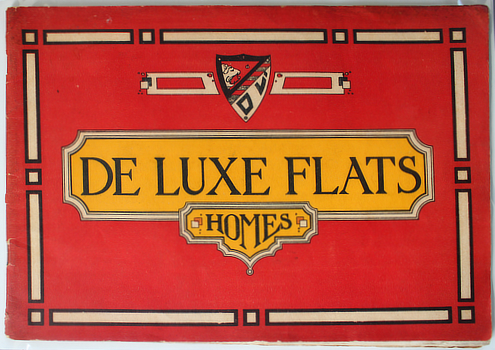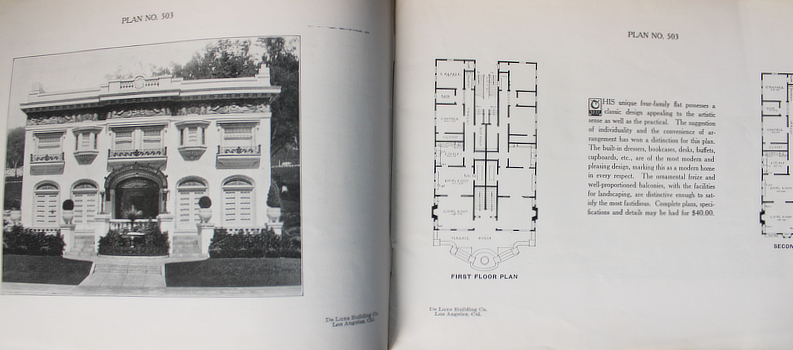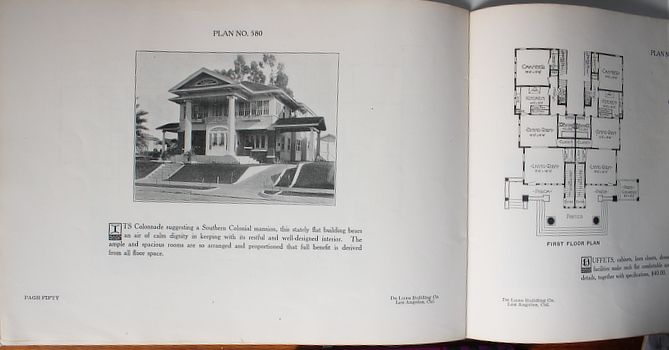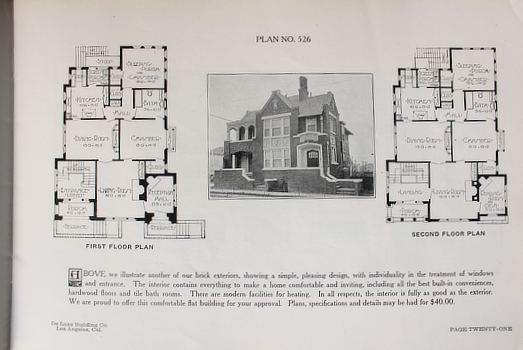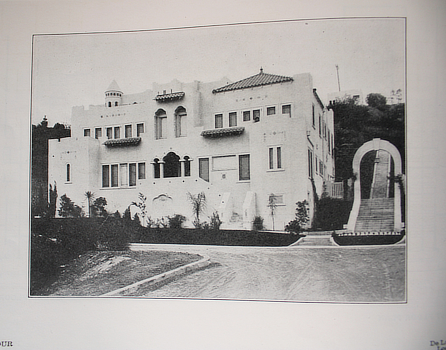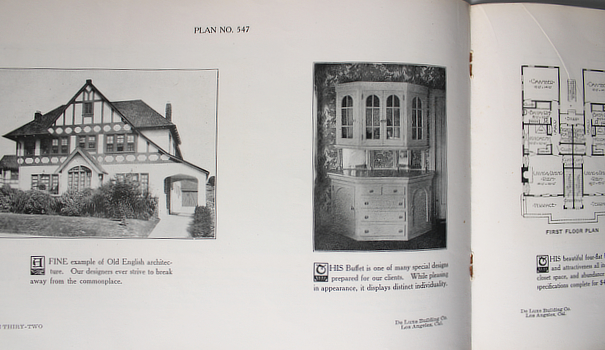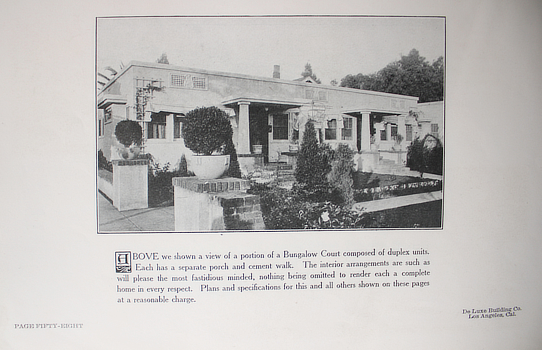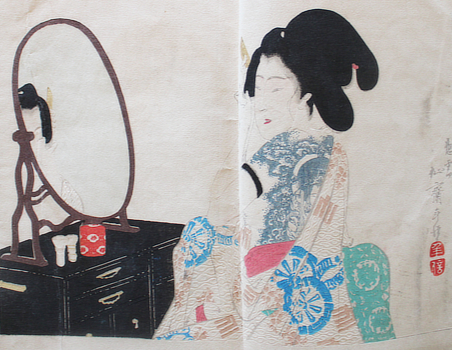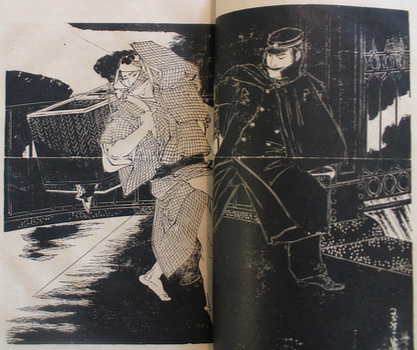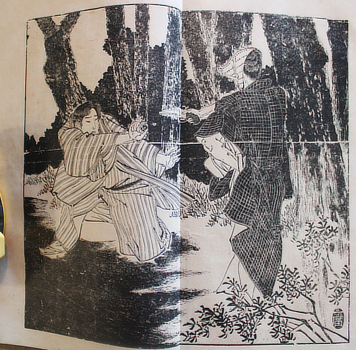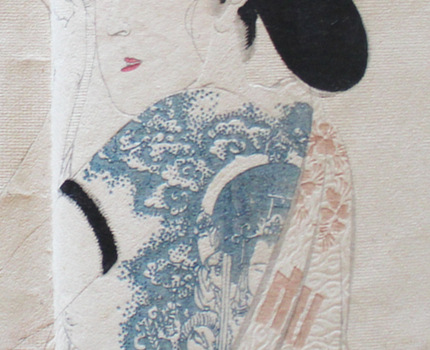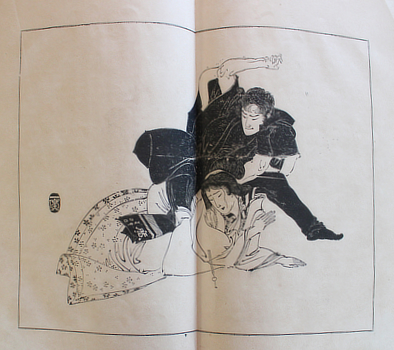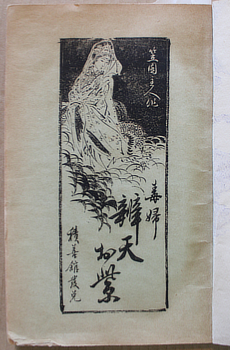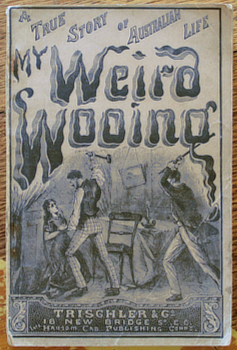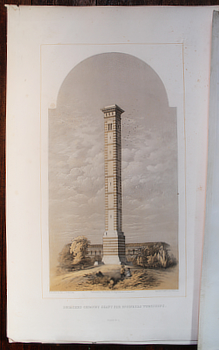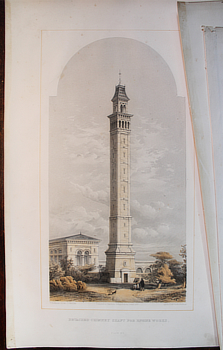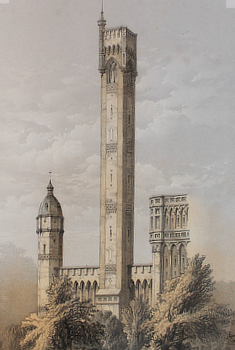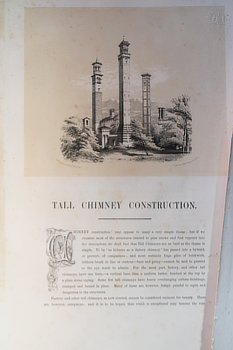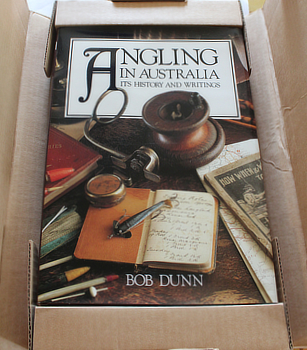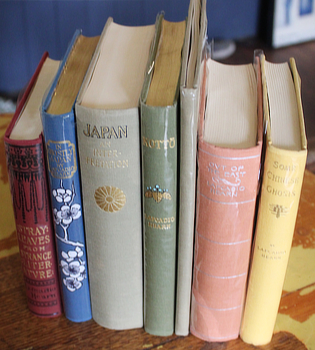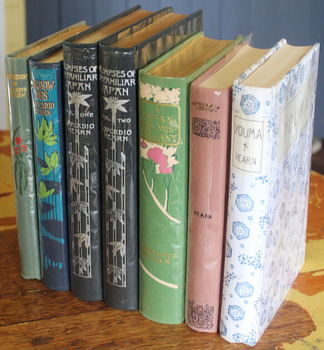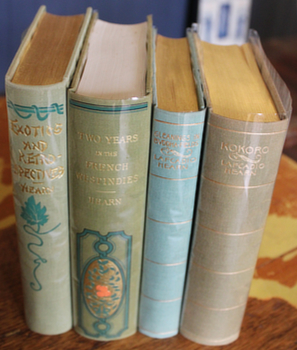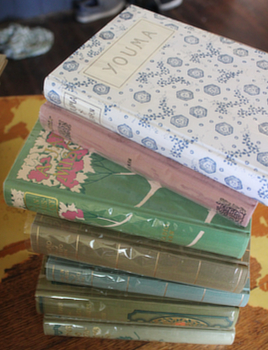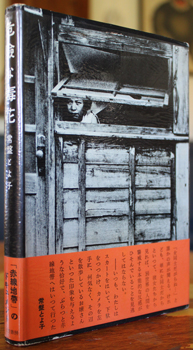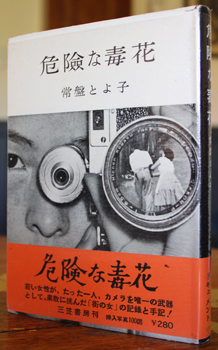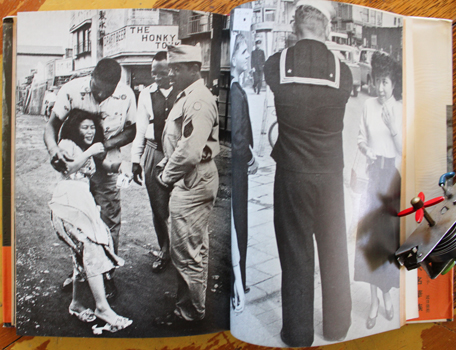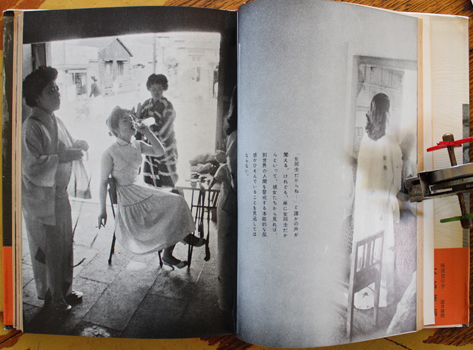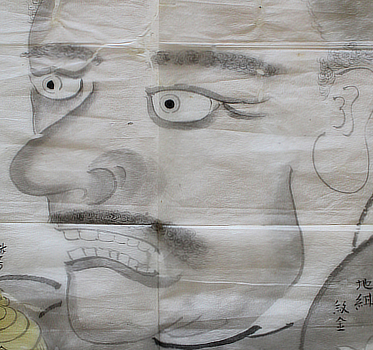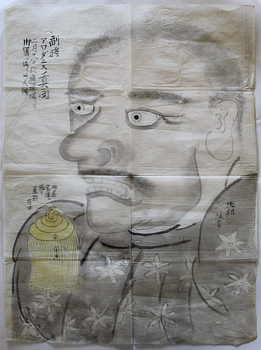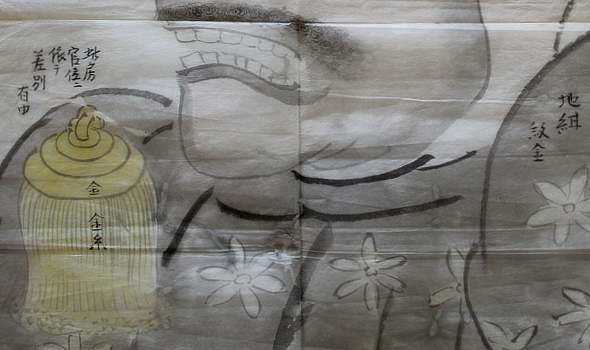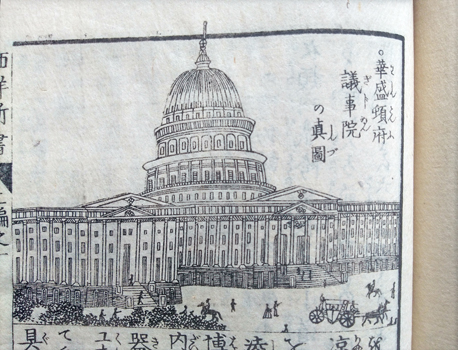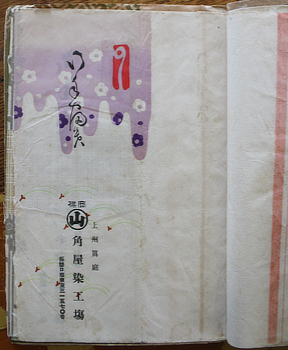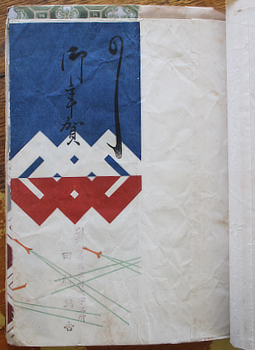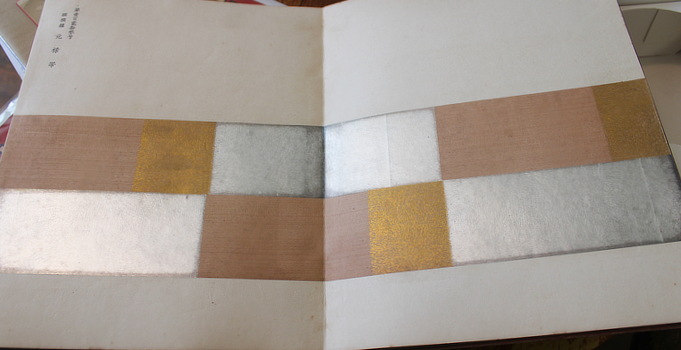
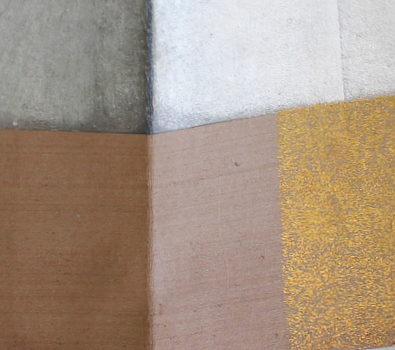
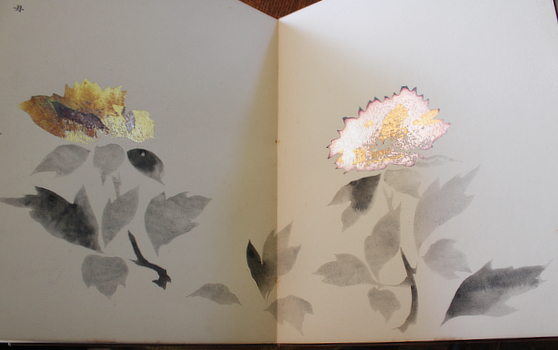
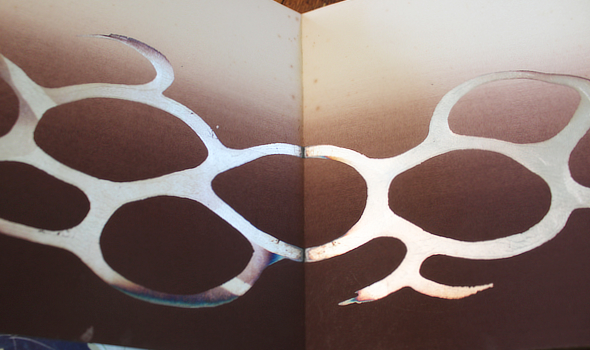
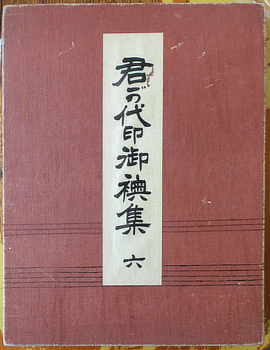
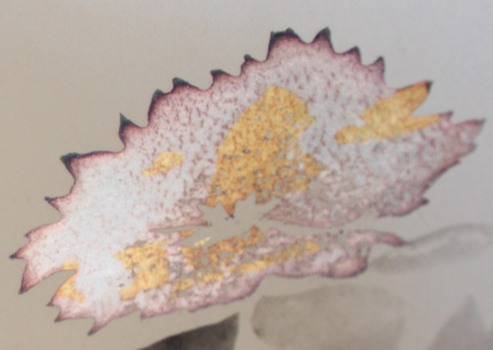

Fusuma design album. 君が代印御襖集 [Kimigayo Shirushi Ofusumashu]. n.p. [193-?]. 29x23cm publisher's cloth with paper label; 34 card leaves with colour patterns, mostly double page. At the end are two cloth samples with designs from the album in different colours. One small mounted stripe sample might be missing. Au$600
This is volume six of a series of catalogues cum pattern books of fusuma - paper for sliding screens. Since I can't find a mention of any other copies I have no clue how many there were, nor whether they appeared over a number of years. Kimigayo is the national anthem - the range or the maker's name I don't know.
Fusuma catalogues are usually pretty blah; postwar catalogues should be avoided by all but sturdy cultural archaeologists. Seems makers didn't have a high opinion of the tastes of someone who would buy their screens ready made. This one is the only exception I've seen so far. Some is bland but a lot is high class and chic in the neo-neo-rimpa style, ie the reworking of tasteful luxurious antiquity inspired by the turn of the century work of neo-rimpa designers like Korin, Sekka, Nosaburo et al.
The printing is outstanding and as usual with such stuff, hard to photograph: the aged gold and silver, heavy raised textures, overprinting, embosssing ... need to be seen in the right light. Very Kyoto and far from the brazen tizz of Tokyo and Osaka. Until we find, at the very end, the stamp of the Yamaguchi Hyoguten of Shibuya, Tokyo. Hyoguten usually translates as mounting store - a business that makes scrolls, screens and sliding screens. There are now Yamaguchi Hyoguten everywhere except Shibuya it seems. I don't know whether any of them are related. Still, I insist the design and printing belong to Kyoto.
